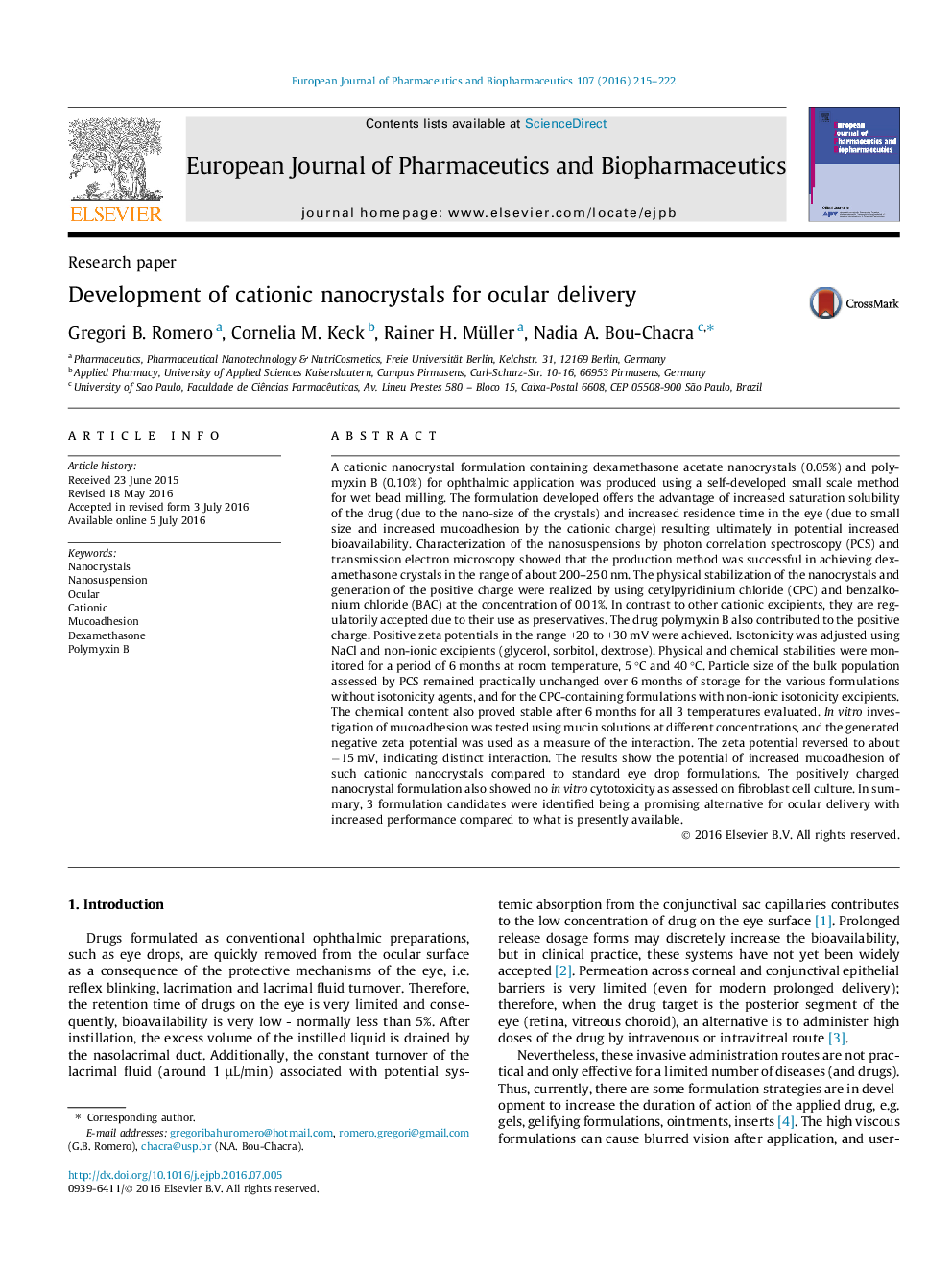| کد مقاله | کد نشریه | سال انتشار | مقاله انگلیسی | نسخه تمام متن |
|---|---|---|---|---|
| 2083196 | 1545316 | 2016 | 8 صفحه PDF | دانلود رایگان |
A cationic nanocrystal formulation containing dexamethasone acetate nanocrystals (0.05%) and polymyxin B (0.10%) for ophthalmic application was produced using a self-developed small scale method for wet bead milling. The formulation developed offers the advantage of increased saturation solubility of the drug (due to the nano-size of the crystals) and increased residence time in the eye (due to small size and increased mucoadhesion by the cationic charge) resulting ultimately in potential increased bioavailability. Characterization of the nanosuspensions by photon correlation spectroscopy (PCS) and transmission electron microscopy showed that the production method was successful in achieving dexamethasone crystals in the range of about 200–250 nm. The physical stabilization of the nanocrystals and generation of the positive charge were realized by using cetylpyridinium chloride (CPC) and benzalkonium chloride (BAC) at the concentration of 0.01%. In contrast to other cationic excipients, they are regulatorily accepted due to their use as preservatives. The drug polymyxin B also contributed to the positive charge. Positive zeta potentials in the range +20 to +30 mV were achieved. Isotonicity was adjusted using NaCl and non-ionic excipients (glycerol, sorbitol, dextrose). Physical and chemical stabilities were monitored for a period of 6 months at room temperature, 5 °C and 40 °C. Particle size of the bulk population assessed by PCS remained practically unchanged over 6 months of storage for the various formulations without isotonicity agents, and for the CPC-containing formulations with non-ionic isotonicity excipients. The chemical content also proved stable after 6 months for all 3 temperatures evaluated. In vitro investigation of mucoadhesion was tested using mucin solutions at different concentrations, and the generated negative zeta potential was used as a measure of the interaction. The zeta potential reversed to about −15 mV, indicating distinct interaction. The results show the potential of increased mucoadhesion of such cationic nanocrystals compared to standard eye drop formulations. The positively charged nanocrystal formulation also showed no in vitro cytotoxicity as assessed on fibroblast cell culture. In summary, 3 formulation candidates were identified being a promising alternative for ocular delivery with increased performance compared to what is presently available.
Figure optionsDownload high-quality image (165 K)Download as PowerPoint slide
Journal: European Journal of Pharmaceutics and Biopharmaceutics - Volume 107, October 2016, Pages 215–222
